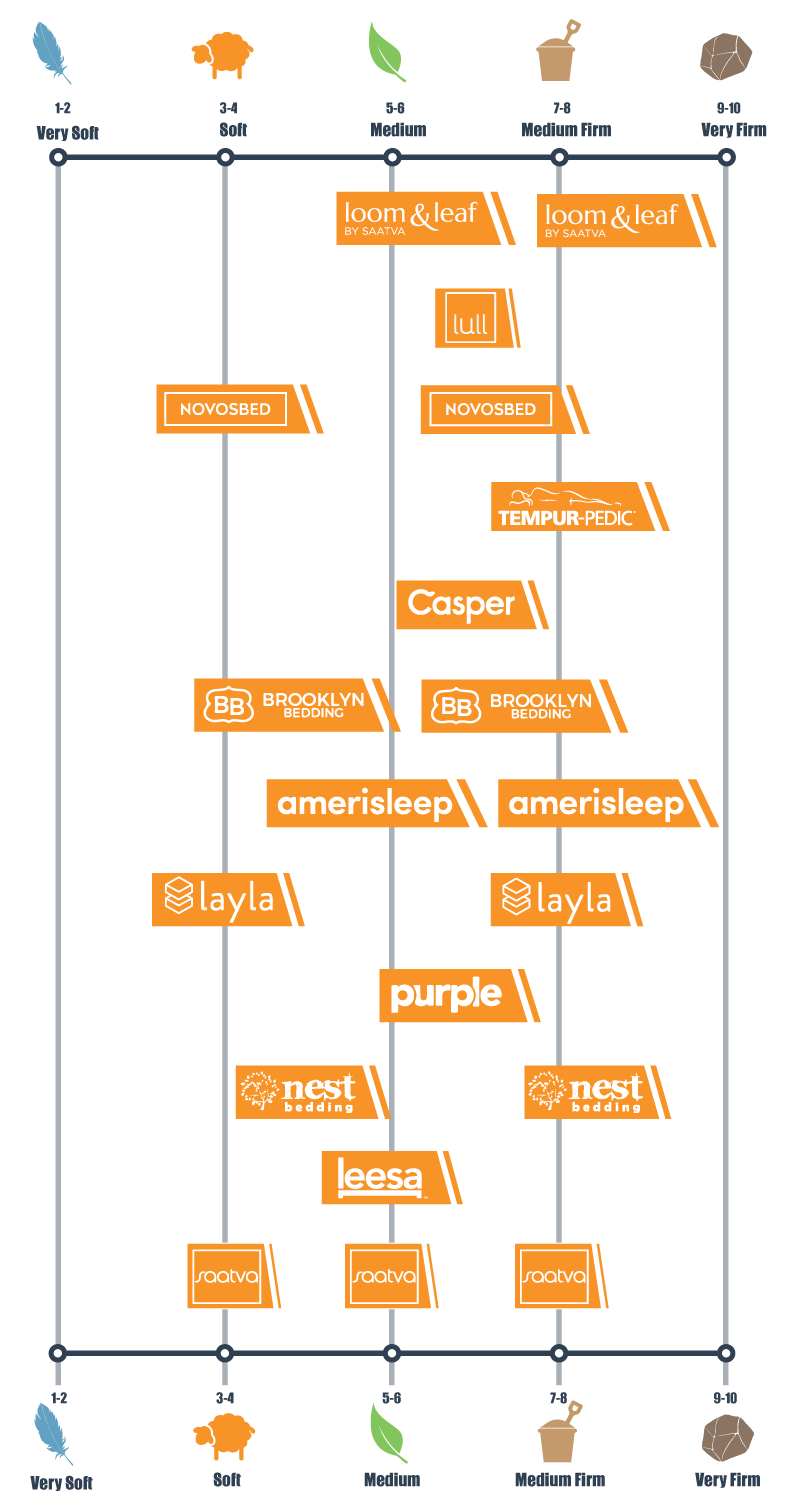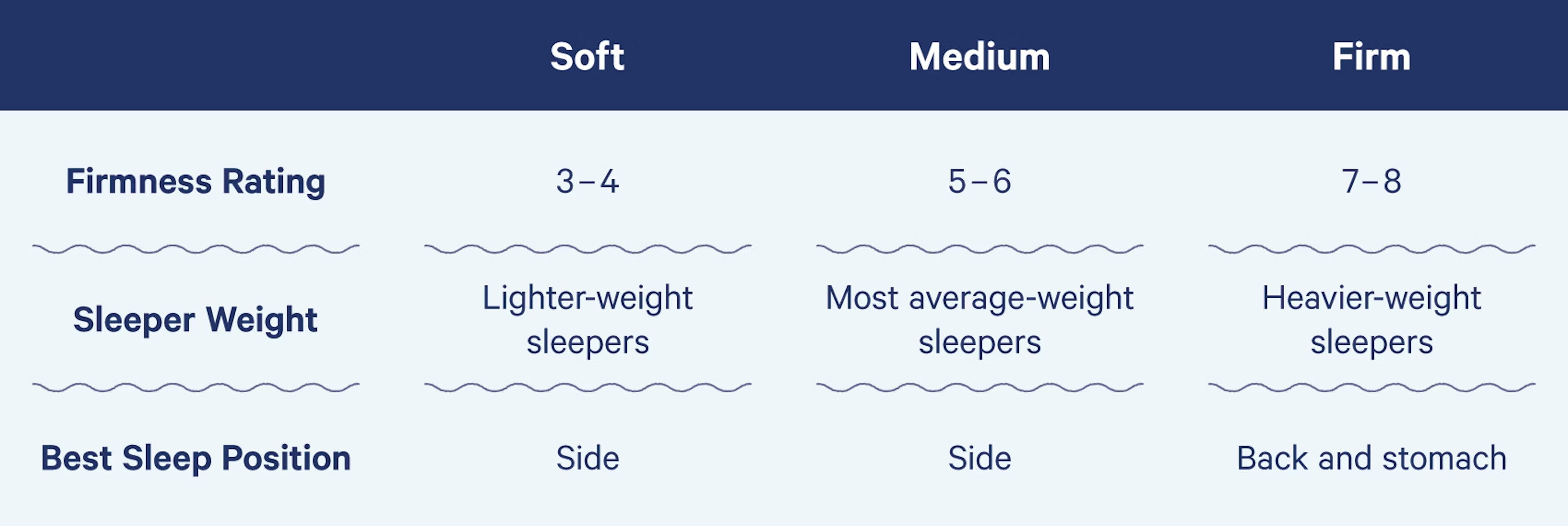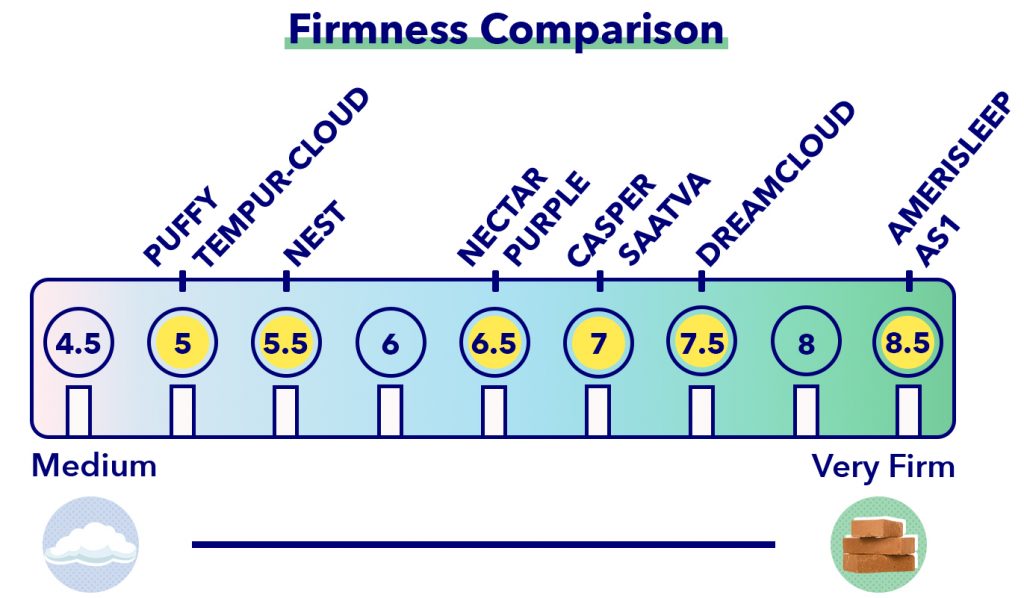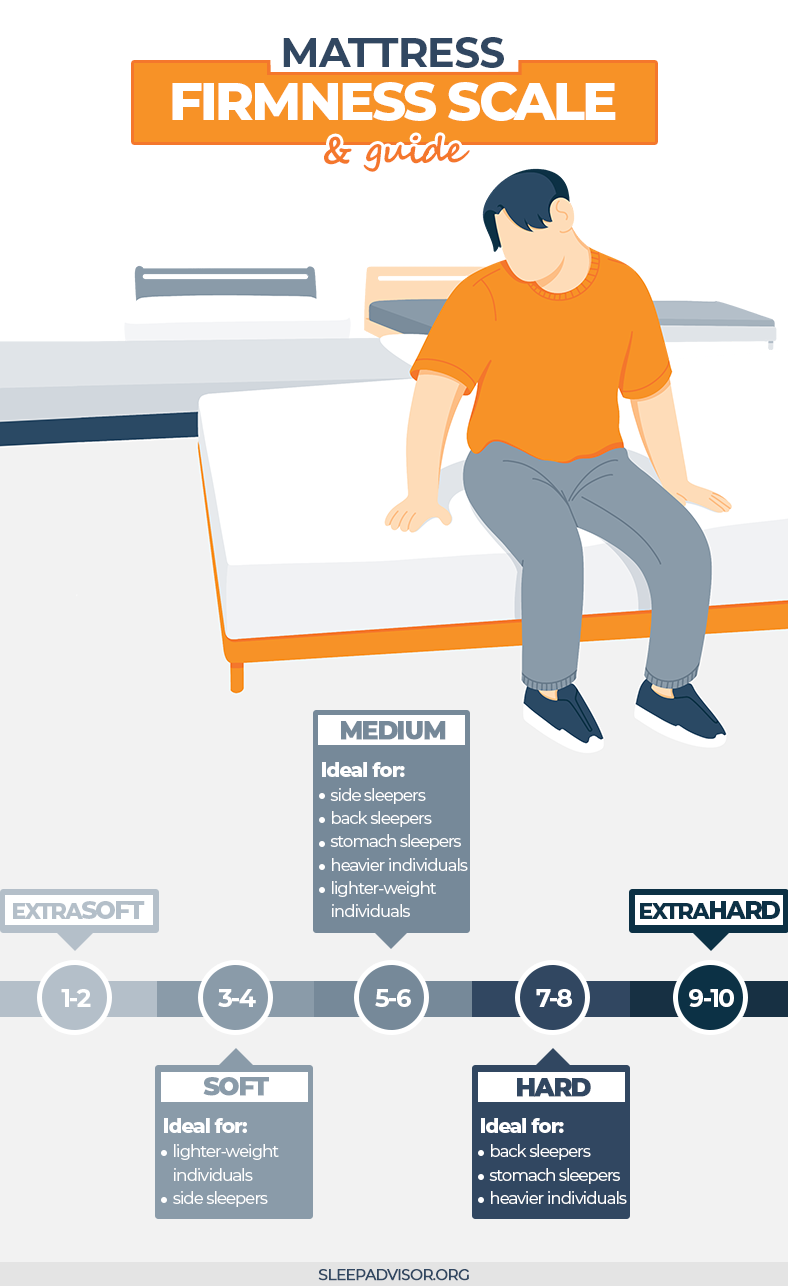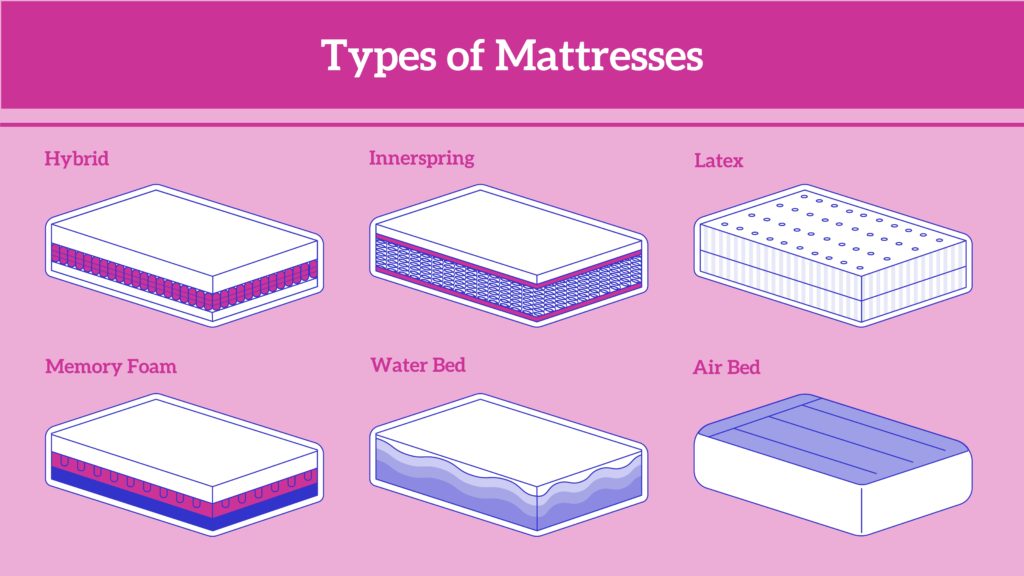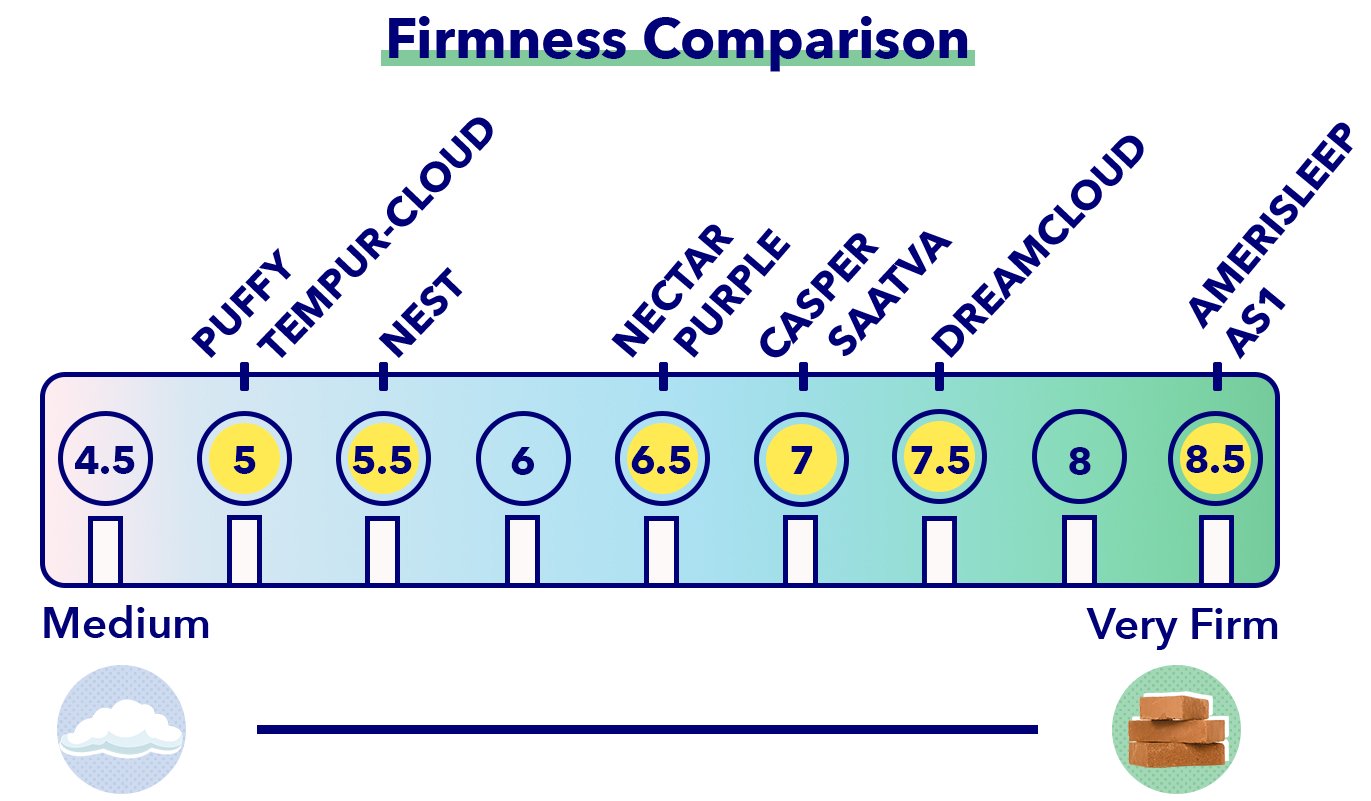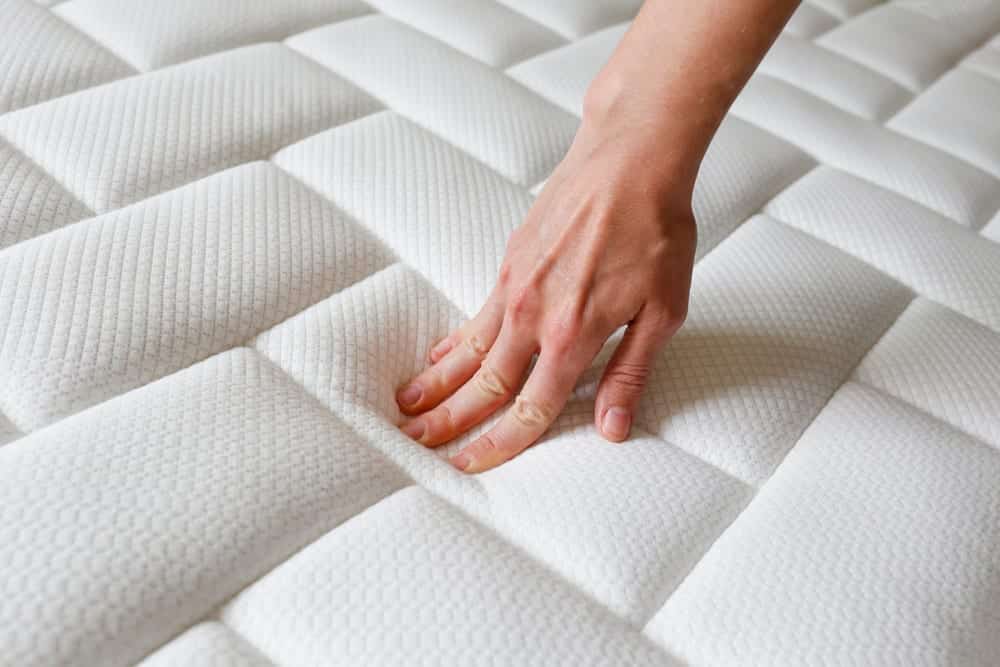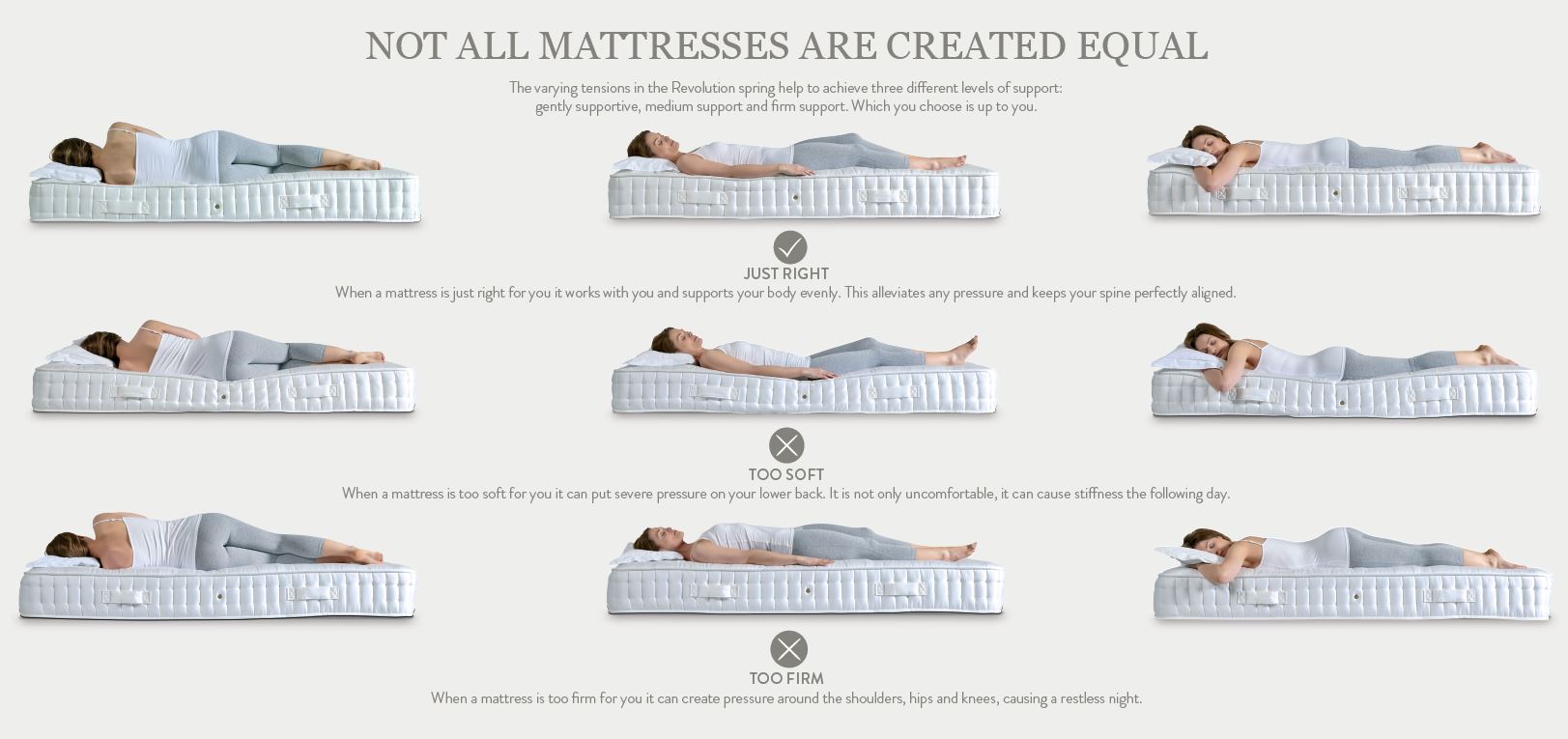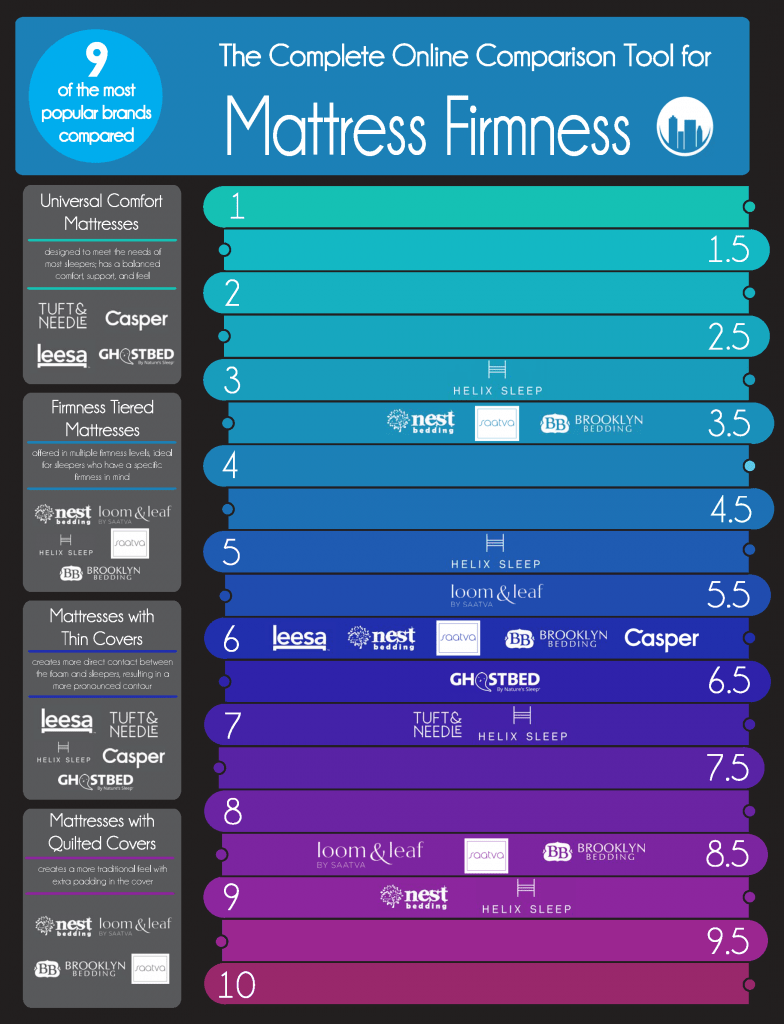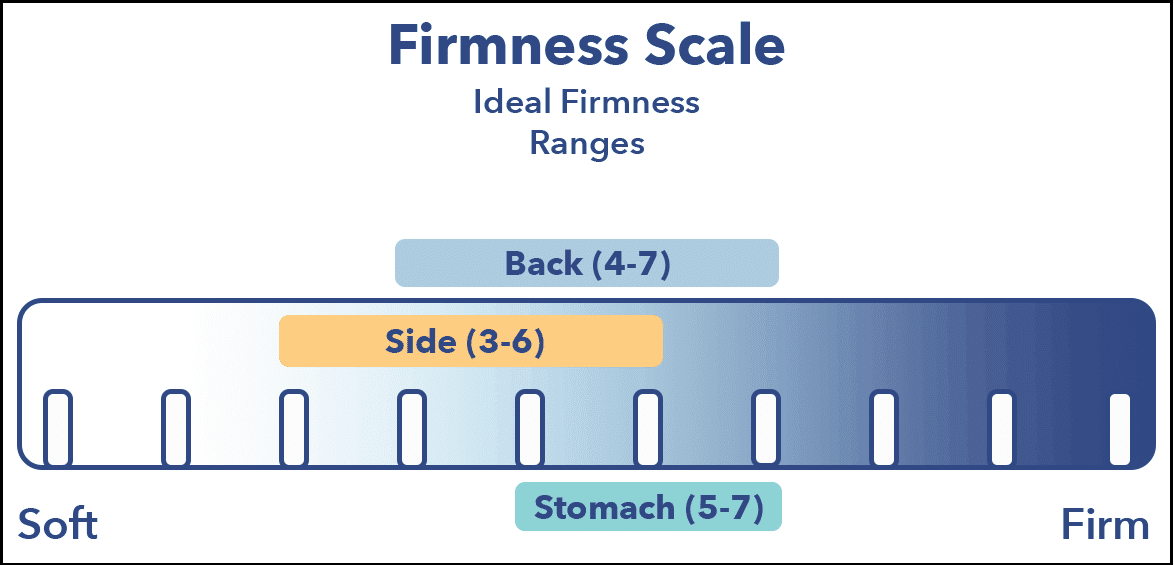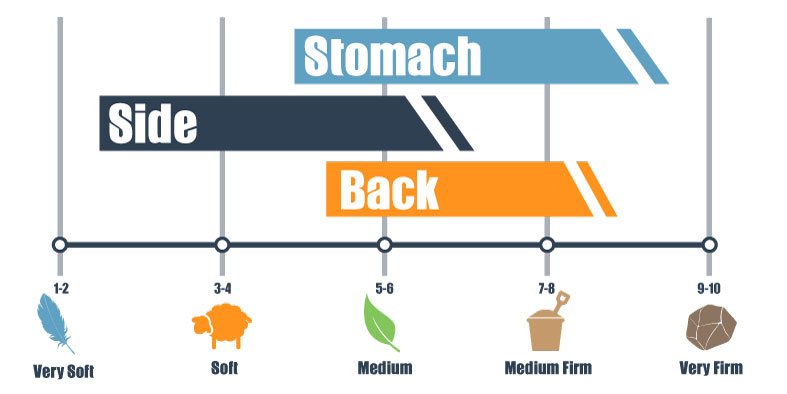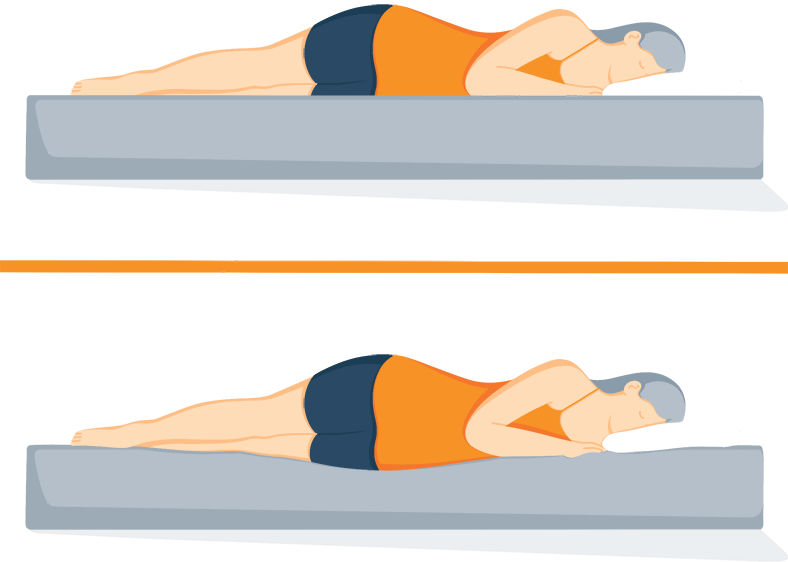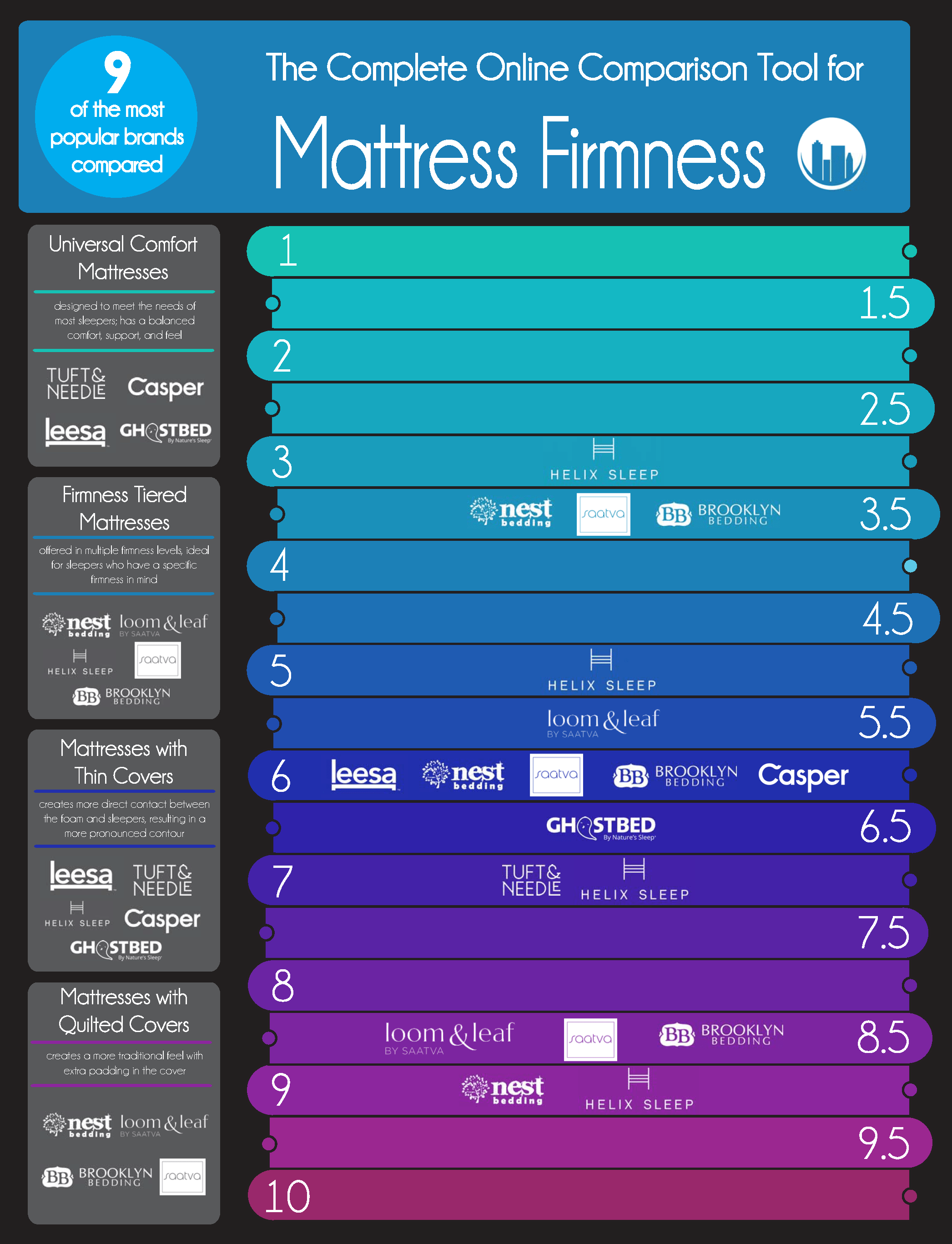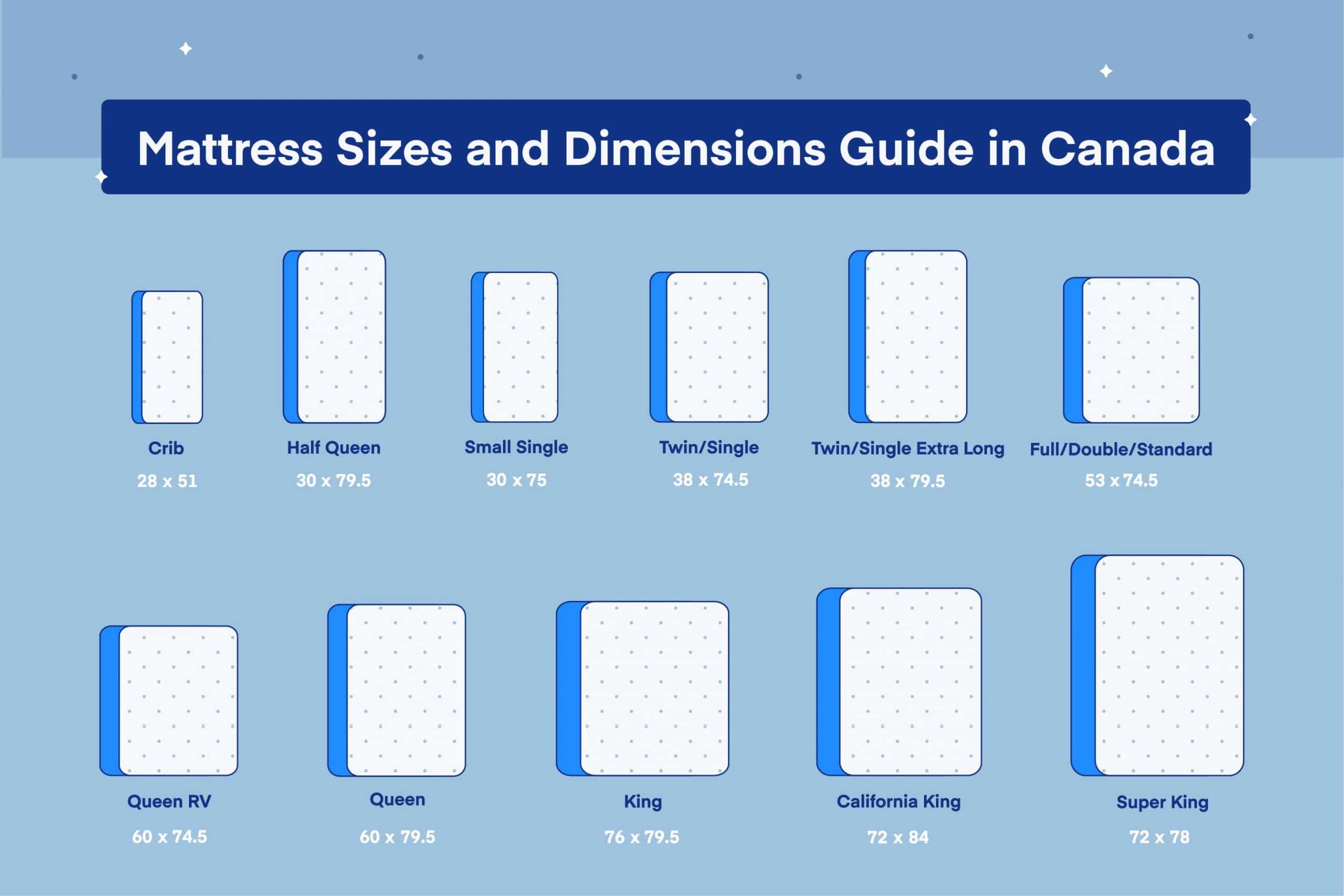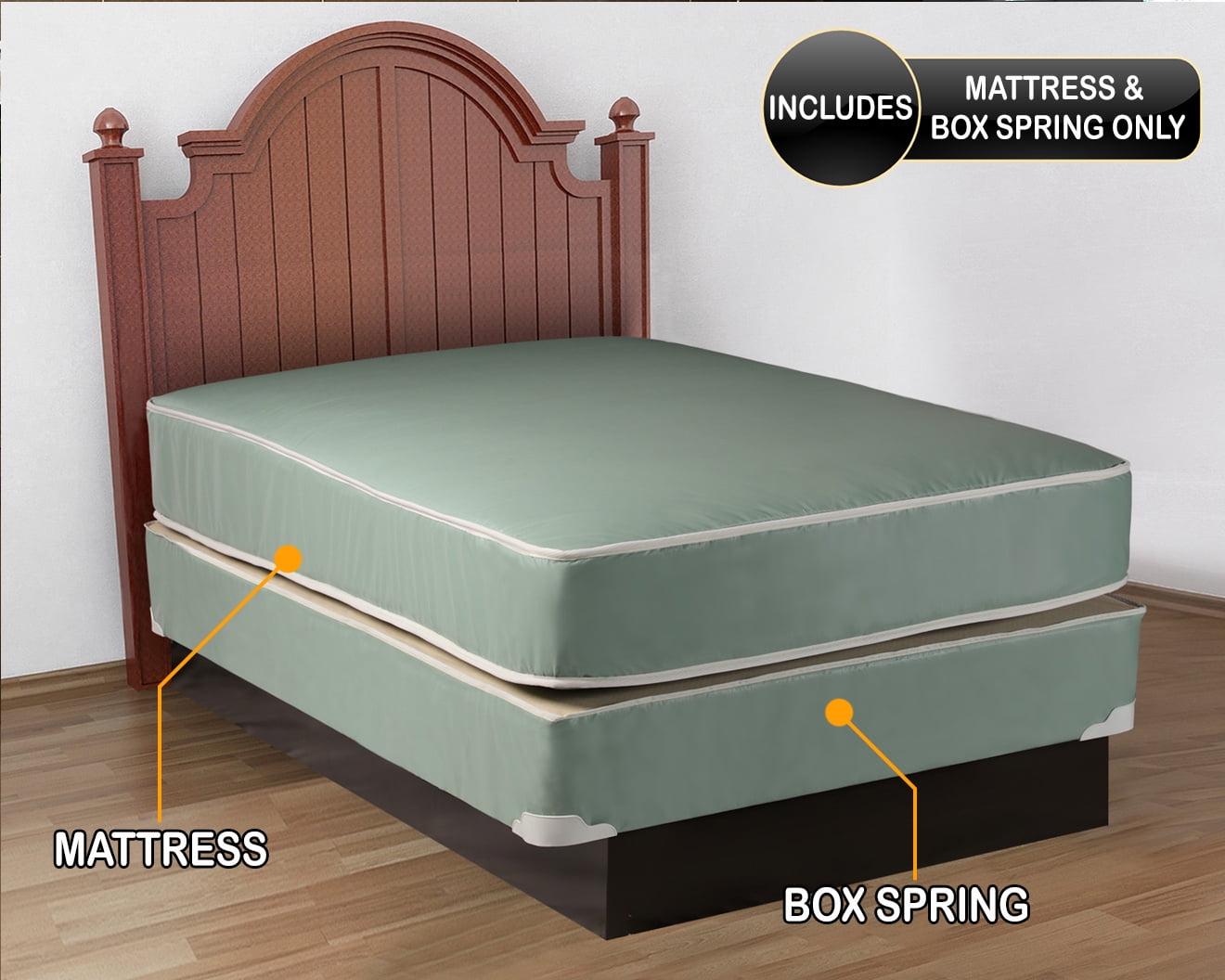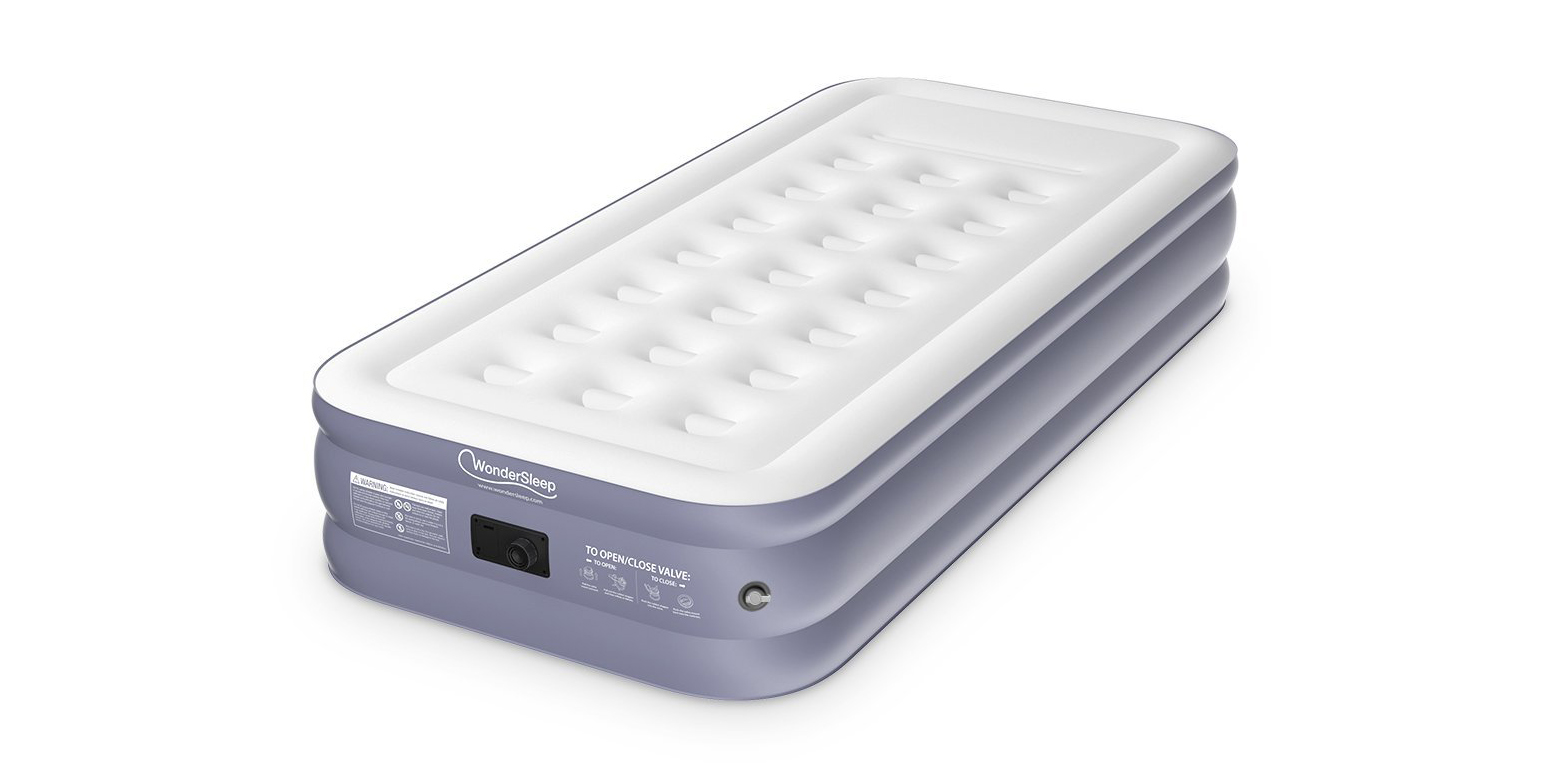Choosing the right mattress firmness is crucial for getting a good night's sleep and waking up feeling refreshed and rejuvenated. With so many options available, it can be overwhelming to navigate the world of mattress firmness. That's why we've created this guide and comparison chart to help you understand the different levels of firmness and find your perfect fit.Mattress Firmness Scale: Guide & Comparison Chart
Before diving into the different levels of firmness, it's important to understand the various types of mattresses available. The most common types are innerspring, memory foam, latex, and hybrid mattresses. Innerspring mattresses are made with a coil support system and often have a thin layer of padding on top. They provide a bouncy and responsive feel. Memory foam mattresses are made with layers of foam that contour to your body and provide pressure relief. They are known for their body-hugging feel and ability to reduce motion transfer. Latex mattresses are made with layers of natural or synthetic latex and provide a bouncy and supportive feel. They are also hypoallergenic and resistant to dust mites. Hybrid mattresses combine the features of innerspring and memory foam or latex mattresses, providing both support and pressure relief.Mattress Firmness Guide: Understanding Mattress Types
Most mattresses are rated on a scale from 1 to 10, with 1 being the softest and 10 being the firmest. However, different brands may use different scales, so it's important to understand what each number represents. A 1 on the scale represents an ultra-plush mattress, which is the softest option. These mattresses provide maximum cushioning and a "sinking" feeling. A 2-3 on the scale represents a plush mattress, which is still soft but with a little more support. These mattresses are great for side sleepers and those who like a softer feel. A 4-6 on the scale represents a medium or medium-firm mattress. These are the most popular options and provide a balance of comfort and support. They are suitable for most sleepers and body types. A 7-8 on the scale represents a firm or extra-firm mattress. These mattresses provide minimal sinkage and are best for back and stomach sleepers or those with back pain. A 9-10 on the scale represents an ultra-firm mattress, which is the firmest option available. These mattresses provide little to no sinkage and are best for those who prefer a very firm feel.Mattress Firmness Scale: What Do the Numbers Mean?
When choosing the right mattress firmness, it's important to consider your sleeping position, body weight, and any specific health concerns you may have. Side sleepers typically do best with a medium or medium-soft mattress to provide cushioning for their shoulders and hips, which may experience pressure points on a firmer mattress. Back sleepers generally do well with a medium-firm or firm mattress to keep their spine aligned and prevent lower back pain. Stomach sleepers may benefit from a firm or extra-firm mattress to prevent their hips from sinking too far into the mattress, which can cause discomfort and back pain. Body weight also plays a role in determining the right firmness level. Heavier individuals may prefer a firmer mattress for proper support, while lighter individuals may feel more comfortable on a softer mattress. If you have any specific health concerns, such as chronic back pain or arthritis, it's best to consult with your doctor or a sleep specialist to determine the best firmness level for your needs.Mattress Firmness Guide: How to Choose the Right Firmness Level
Now that you understand the different levels of firmness and how to choose the right one, it's time to find your perfect fit. Here is a comparison chart of popular mattress brands and their firmness levels:Mattress Firmness Comparison Chart: Find Your Perfect Fit
Ultimately, the best firmness level for you depends on your personal preferences and needs. Some people may find a softer or firmer mattress more comfortable, while others may need a specific level for health reasons. It's also important to note that your ideal firmness level may change over time. As we age, our bodies may require more support, so it's important to reassess your mattress every few years and make any necessary changes.Mattress Firmness Scale: Which Level is Best for You?
When comparing mattresses, it's important to understand that the same firmness level may feel different from one brand to another. This is due to variations in materials, construction, and overall design. For example, a medium-firm mattress from one brand may feel softer or firmer than a medium-firm mattress from another brand. This is why it's crucial to test out a mattress in person to get a better sense of its firmness level.Mattress Firmness Comparison Chart: Understanding the Differences
If you're still unsure about which firmness level is best for you, here are some tips to help you determine your ideal fit:Mattress Firmness Guide: How to Determine Your Ideal Firmness Level
It's important to remember that the numbers on the mattress firmness scale are just a guide and may vary depending on the brand and model. It's also important to note that a mattress's firmness level can change over time as it wears out or if the materials break down. If you're unsure about a specific mattress's firmness level, look for reviews from others who have purchased and slept on the mattress for an extended period of time. This can give you a better idea of how the mattress holds up over time.Mattress Firmness Scale: Breaking Down the Numbers
We hope this guide and comparison chart have helped you understand the different levels of mattress firmness and how to choose the right one for you. Remember to consider your sleeping position, body weight, and specific needs when making your decision, and always test out a mattress in person before purchasing. With the right firmness level, you can ensure a good night's sleep and wake up feeling rested and ready to take on the day. Sweet dreams!Mattress Firmness Comparison Chart: A Comprehensive Guide
How to Choose the Right Mattress Firmness for Your Needs
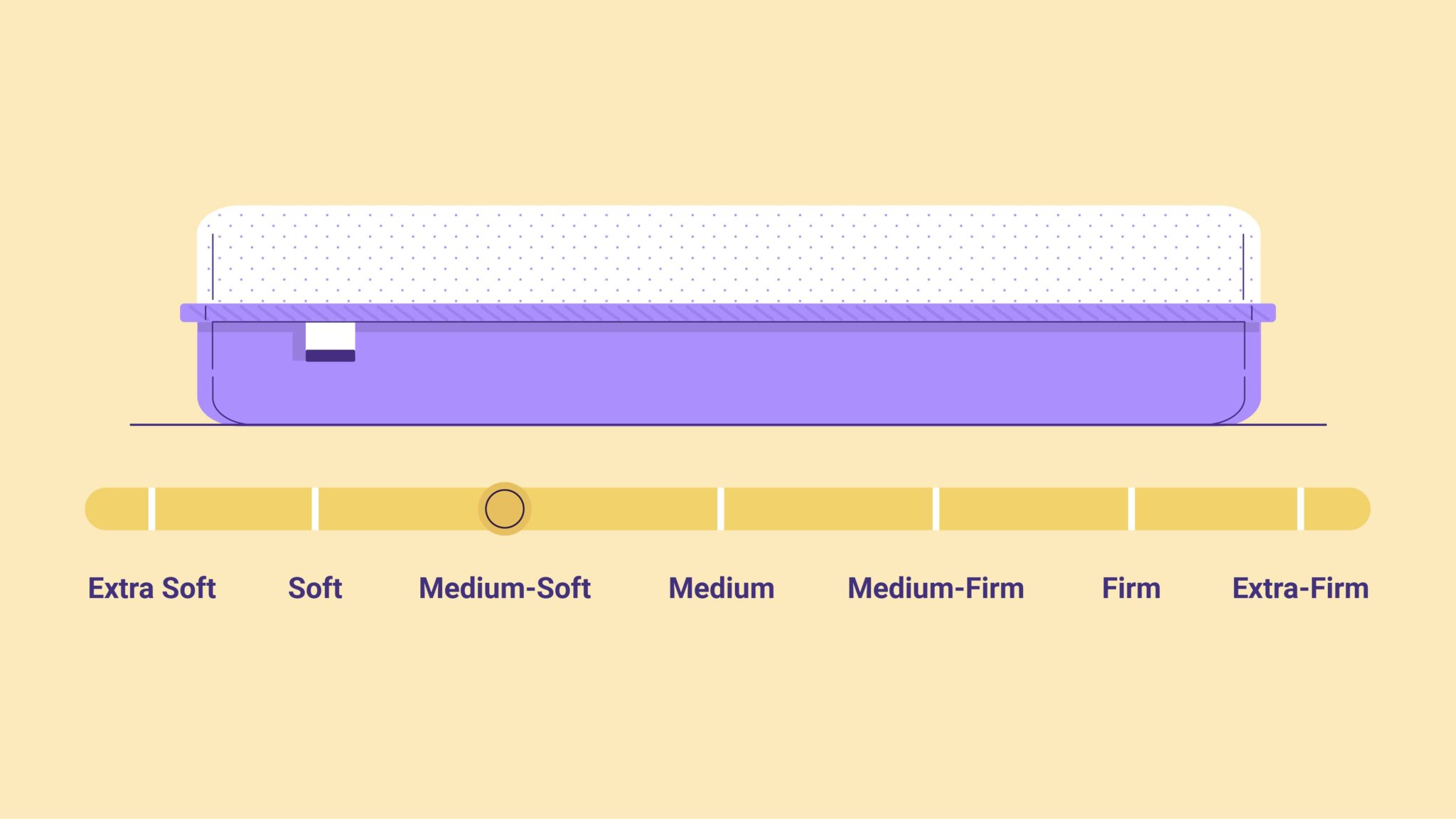
The Importance of Mattress Firmness
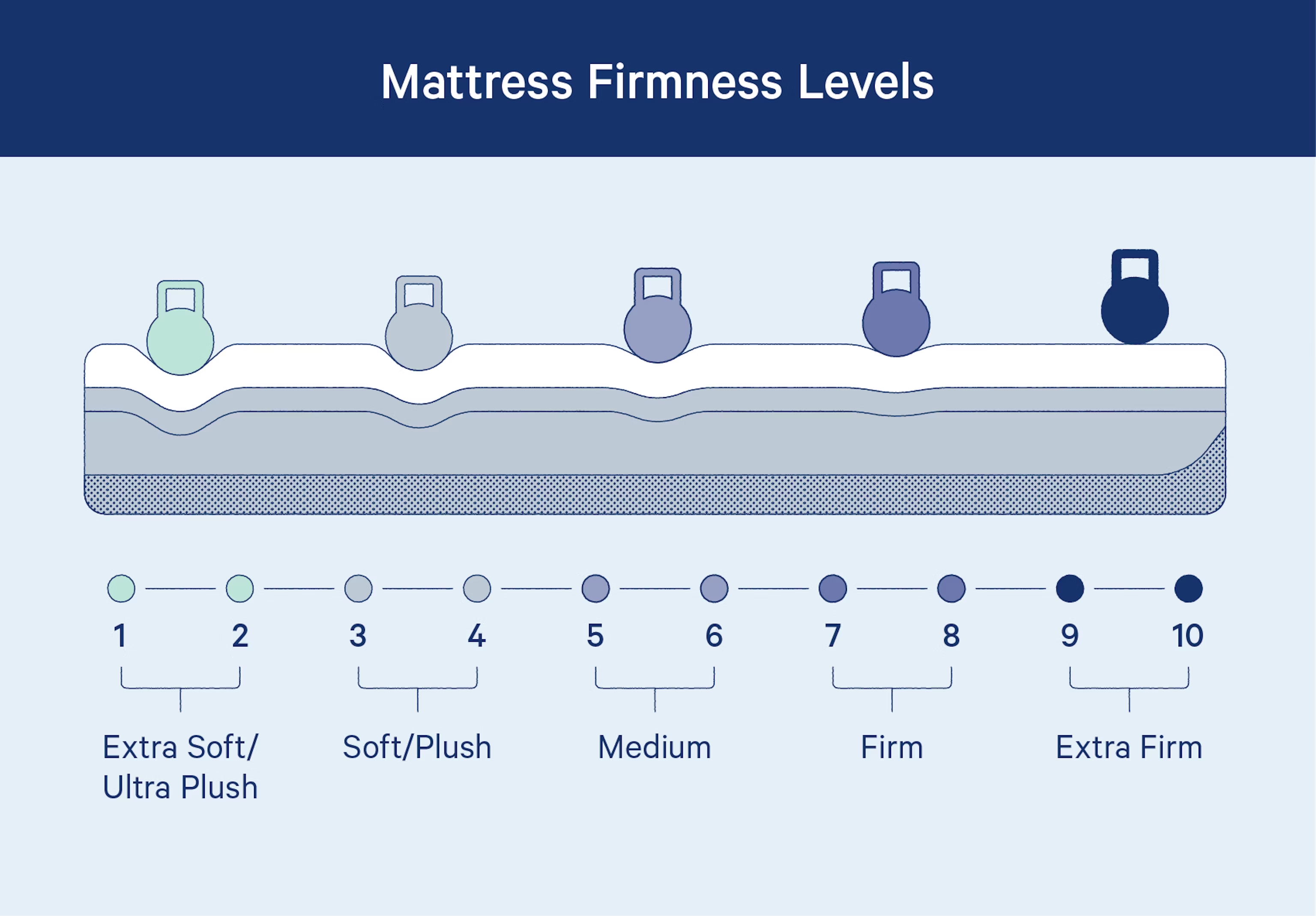 When it comes to designing the perfect bedroom, choosing the right mattress is crucial. Not only does it affect the overall aesthetic of the room, but it also plays a significant role in your sleep quality and comfort. With so many options on the market, it can be overwhelming to determine the best mattress firmness for your needs. That's where a mattress firmness comparison chart comes in handy.
When it comes to designing the perfect bedroom, choosing the right mattress is crucial. Not only does it affect the overall aesthetic of the room, but it also plays a significant role in your sleep quality and comfort. With so many options on the market, it can be overwhelming to determine the best mattress firmness for your needs. That's where a mattress firmness comparison chart comes in handy.
Understanding Mattress Firmness Levels
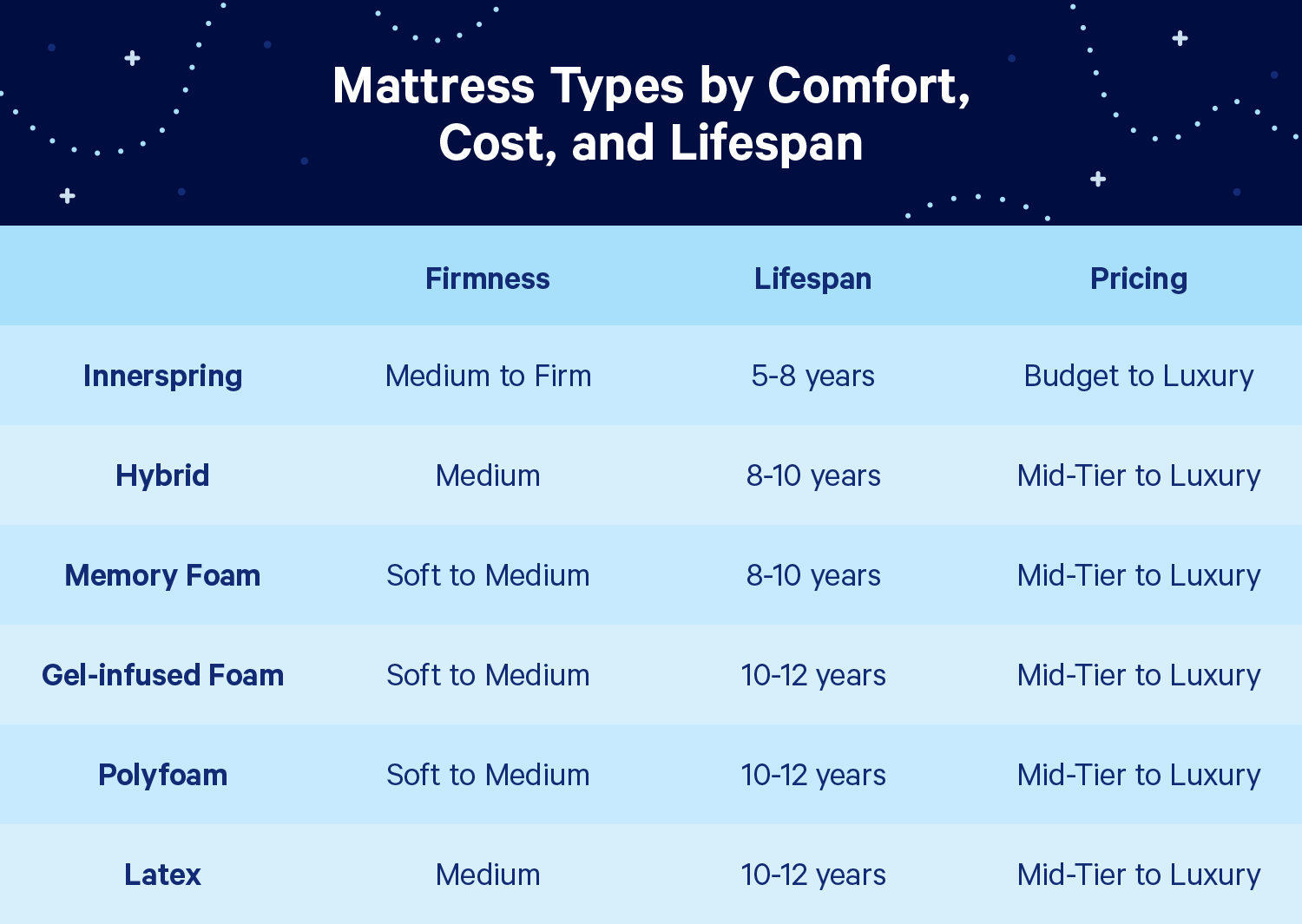 Mattress firmness is typically measured on a scale from 1 to 10, with 1 being the softest and 10 being the firmest. The level of firmness that is best for you depends on your personal preferences and sleeping position. For example, side sleepers tend to prefer a softer mattress to allow for better pressure relief, while back and stomach sleepers may prefer a firmer mattress for proper spinal alignment.
Mattress firmness is typically measured on a scale from 1 to 10, with 1 being the softest and 10 being the firmest. The level of firmness that is best for you depends on your personal preferences and sleeping position. For example, side sleepers tend to prefer a softer mattress to allow for better pressure relief, while back and stomach sleepers may prefer a firmer mattress for proper spinal alignment.
Using a Mattress Firmness Comparison Chart
Finding the Perfect Balance
 It's important to remember that
choosing the right mattress firmness is a personal decision
and may require some trial and error. A good rule of thumb is to try out mattresses in person and take note of how they feel in different positions. You can also use a mattress firmness comparison chart to narrow down your options and make a more informed decision.
In addition to firmness, also consider other factors such as material, support, and durability when choosing a mattress. Ultimately, the perfect balance of comfort and support will lead to a good night's sleep and a well-designed bedroom.
It's important to remember that
choosing the right mattress firmness is a personal decision
and may require some trial and error. A good rule of thumb is to try out mattresses in person and take note of how they feel in different positions. You can also use a mattress firmness comparison chart to narrow down your options and make a more informed decision.
In addition to firmness, also consider other factors such as material, support, and durability when choosing a mattress. Ultimately, the perfect balance of comfort and support will lead to a good night's sleep and a well-designed bedroom.
In Conclusion
 When it comes to designing your bedroom, don't overlook the importance of choosing the right mattress firmness. Use a mattress firmness comparison chart to guide your decision and find the perfect balance for your needs and preferences. Remember to take into account your body weight and try out different mattresses in person to ensure a comfortable and restful sleep every night.
When it comes to designing your bedroom, don't overlook the importance of choosing the right mattress firmness. Use a mattress firmness comparison chart to guide your decision and find the perfect balance for your needs and preferences. Remember to take into account your body weight and try out different mattresses in person to ensure a comfortable and restful sleep every night.
